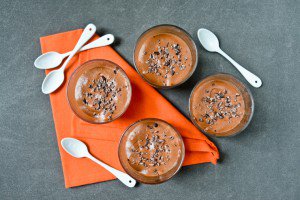Are lacto-fermented pickles a part of your diet? They’re not? They should be*! And today is the day I convert you with this super easy, super approachable recipe.
There is a tiny Lebanese take-out in our neighborhood where Maxence and I like to get sandwiches on lazy weekend days. (For those of you who own a copy of The French Market Cookbook — you rock, btw! — it is the very place that’s featured in the pistachio, cardamom, and coffee dessert jars.)
I usually opt for the falafel sandwich (see my baked falafel recipe) or the chicken shawarma sandwich, and part of what makes both stellar is the liberal inclusion of crunchy turnip pickles, softly pink and delectably sour.
Some pickles are made by steeping the vegetables in vinegar, such as for this quick carrot and ginger pickle, but these particular pickles are lacto-fermented, and I started making them myself a few years ago.
The recipe is an excellent use for the young turnips popping up on greenmarket stalls right about now, with their lush greens you should save and caress then eat like spinach. What makes the turnips pale pink here is the fact that they are fermented together with red beets: a small amount of beet is enough to color the whole thing an enthusiastic shade of fuchsia, but I like to push it to half and half** because me and beets are real tight.
Making your own lacto-fermented pickles can sound intimidating***, but it really could not be easier. Seriously. I don’t see how it could. Just stack the beets and turnips in a jar, add salt and water, and wait. Think you’re up for it? I think you are, and it’s the perfect gateway drug into the world of fermented foods.
And once you have your easy lacto-fermented pickles all tasty and good-lookin’ in your fridge, what do you do with them? You add them to sandwiches (falafel or otherwise); you nibble on them; you serve them with firm cheese and bread à la ploughman’s lunch; you add them to salads and potato salads; and generally use them as a delightfully sour counterpoint to cut through the richness of any dish.
Oh, and I should add that once you’re done eating the pickles, you should drink the fermentation liquid: it is no more, no less than a beet kvass and it is full of good things.
Want more fermented foods?
Check out my recipes for homemade kimchi, water kefir, coconut milk yogurt, and my many sourdough baking recipes.
And if you’d like some books to help you delve deeper into the subject of fermented foods, I recommend you pick up Sandor Ellix Katz’s classic Wild Fermentation and Amanda Feifer’s inspired Ferment Your Vegetables.
~~~
* Learn more about lacto-fermentation and the benefits of fermented foods here and here.
** It’s important not to do more beets than turnips: because beets are fairly sweet, too large a quantity will throw off the balance of acidity.
*** As a beginner, you might worry that you won’t be able to tell if your lacto-fermented pickles are actually good to eat. But the fermentation process is actually safer than regular canning, and on the rare off-chance that the fermentation goes awry, the smell will be so repulsive — some liken it to the smell of a rotting corpse! — there will be zero point zero doubt that the whole thing must be trashed.

Have you tried this? Share your pics on Instagram!
Please tag your pictures with #cnzrecipes. I'll share my favorites!
Ingredients
- 340 grams (12 ounces) red beet, peeled, and cut into 1-cm (1/3-inch) matchsticks (about 2 cups after cutting)
- 340 grams (12 ounces) young turnips, peeled if tough-skinned, and cut into 1-cm (1/3-inch) matchsticks (about 1 1/2 cups after cutting)
- 20 grams (2 tablespoons) coarse sea salt
- 480 ml (2 cups) filtered (non-chlorinated) water, at room temperature
Instructions
- Have ready a spotlessly clean 1-liter (1-quart) glass jar, preferably with an airlock such as this one. No need to sterilize the jar; you can just clean it in hot soapy water or run it through a dishwasher cycle.
- Arrange the beets and turnips in the jar in alternating layers, sprinkling with the salt as you go. When packed tightly, this amount should fill your jar and leave about 3 cm (1 1/2 inches) of space from the top. Don't fill it more than that.
- Top up with the filtered water, leaving 2 cm (1 inch) of space at the top.
- Lock the jar, place it on a shallow soup plate (this is to collect any overflow of juices) and allow to ferment at room temperature for 1 week. You may hear some fermentation chatter after a couple of days -- fizzing, hissing, whistling -- this is all normal and a good sign that fermentation is taking place.
- After 1 week, pop the jar open and have a taste. If the pickles taste just right to you, transfer to the fridge and start eating them. If you'd like the acidity and flavor to develop further, allow to ferment for a few more days, tasting daily, until the pickles are to your taste.
- Once refrigerated, the pickles will keep for over a year. (Amazing, right?)















